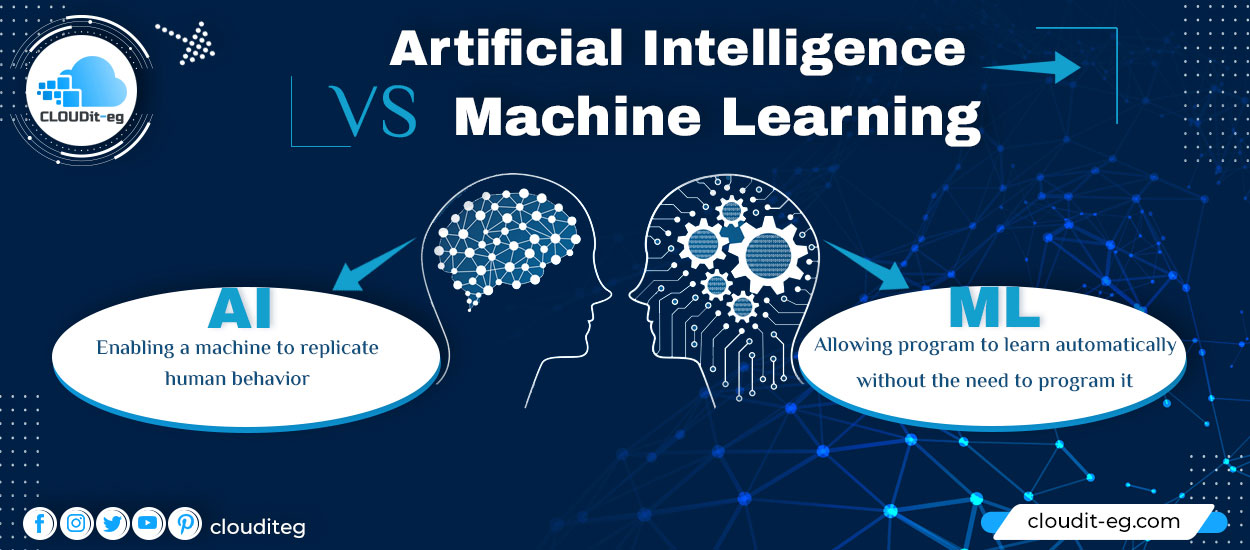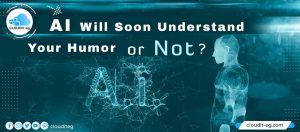Artificial intelligence (AI) is on everyone’s lips. Everyone knows what AI means. Or not? Finding a definition of artificial intelligence is not that easy. Mainly because many others are associated with this term. Related terms from the field of artificial intelligence are often equated with this. But that is not entirely true. We clarify the difference between artificial intelligence and machine learning.
AI and Machine Learning – relatives or just acquaintances?
The term artificial intelligence is now almost like a brand. You may be familiar with this phenomenon: are generally known as the “memo” and paper towels are known as “zoka”. It doesn’t matter which brand the products belong to. It is similar to the concept of artificial intelligence. Many use the term e.g. B. when they speak of humanoid robots from science fiction. Others refer to simple spreadsheets as artificial intelligence.
The reason for this vague use of the term is, on the one hand, the unclear definition. For years, experts have been arguing about what “intelligence” is. So it is not surprising that the term “artificial intelligence” is also difficult to define. On the other hand, many do not understand which processes require intelligence and which do not. Climbing stairs is a complex sequence of movements that requires the cooperation of muscles, nerve tracts, and the brain. For us humans, the process is natural and the many intermediate steps happen almost automatically. For computers, however, it is a difficult, complex task to learn. In contrast, arithmetic is easy for computers, while it often demands the greatest concentration from us, humans.
An example: A system for autonomous driving should reliably detect traffic lights in road traffic. The more pictures it knows of traffic lights, the more reliable the system can identify every type of traffic light. It learns through a large number of traffic light images and becomes more adaptive and intelligent. Machine learning is therefore an important prerequisite for artificial intelligence.
AI has many faces – terms related to intelligent machines
In connection with artificial intelligence, you may have come across the terms “general” or “specific” artificial intelligence. You may also have heard of “strong” and “weak” artificial intelligence. We would like to shed light on the darkness and create clarity about the different “faces” of AI.
General artificial intelligence relates to machines that can perform many different intellectual tasks. Specific artificial intelligence, on the other hand, describes computers that are specialized in a task. We find this form in our everyday life. Chatbots, driver assistance systems, and music or film streaming services with personalized content are all specific forms of artificial intelligence.
There is also a distinction between “strong” and “weak” artificial intelligence. The former describes a machine intelligence that can be equated with human understanding or even surpasses it. The latter stands for systems that partially reach human intelligence but are not intelligent in the human sense. Examples are image, speech, and text recognition.
Intelligence vs. intelligent behavior – is there a difference?
To answer the question right away: the philosopher John Searle says yes. The famous thought experiment “The Chinese Room” comes from him.
Imagine a native English speaker who knows no Chinese locked in a room full of boxes of Chinese symbols (a data base) together with a book of instructions for manipulating the symbols (the program). Imagine that people outside the room send in other Chinese symbols which, unknown to the person in the room, are questions in Chinese (the input). And imagine that by following the instructions in the program the man in the room is able to pass out Chinese symbols which are correct answers to the questions (the output). The program enables the person in the room to pass the Turing Test for understanding Chinese but he does not understand a word of Chinese.
Searle goes on to say, “The point of the argument is this: if the man in the room does not understand Chinese on the basis of implementing the appropriate program for understanding Chinese then neither does any other digital computer solely on that basis because no computer, qua computer, has anything the man does not have.”
Difference Between Artificial Intelligence And Machine Learning
| Artificial Intelligence | Machine Learning |
| AI is an emerging technology that enables a machine to replicate human behavior | Machine Learning is an essential component of AI that allows the program to learn automatically without the need to program it |
| The main goal of AI is to make the machines as smart as a human being | Here the goal is to enable to machine assimilate information and extract important information out of it |
| Here the systems are designed to be intelligent enough to perform tasks like humans | In this case, without the need for any additional programming, it expects the system to learn from the data so collected |
| Artificial intelligence has a wider scope compared because it includes in its sphere several elements including machine learning and deep learning | On the other hand, the scope of machine learning is not as wide as AI |
| AI seeks to create intelligent systems that can handle some of the most complex tasks without much human intervention | Machine learning is about performing those tasks for which the machine has been specifically trained for |
| The main applications of AI are Siri, customer support utilizing chatbots, Online gaming, Intelligent humanoid robot, and much more | Here the main applications of ML are Google search algorithm, FB auto-tagging a friend based on image, and online recommender system |
| Based on their capabilities, they can be divided into weak AI, General AI, and strong AI | They also can be divided based on their three types namely, Supervised learning, unsupervised learning, and reinforcement learning |
| This includes reasoning and rationalization | This includes learning and self-correction with current data |
| AI deals with structured, semi-structured, and unstructured data | ML deals with structured and semi-structured data |




